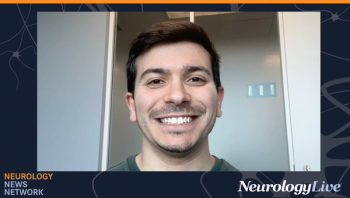
Levetiracetam Inferior to Valproate in Generalized, Unclassified Epilepsy
Findings from SANAD II have suggested that levetiracetam is inferior to valproate in time to 12-month and 24-month remission in patients with generalized or unclassified epilepsy.
Tony Marson, MBChB, MD, FRCP
Treatment with levetiracetam (Keppra, UCB Pharma) has been shown to be inferior to valproate in its time to remission at 1 year in patients with generalized or unclassified epilepsy, as well inferior in its time to remission at 2 years as well as treatment failure for inadequate seizure control, according to new study results.1
Presented at the
The HR was shown to be non-constant over time, and by the 3-year mark, there was little to no difference between the 12-month remission rates for each group. Of those on levetiracetam, 24% had an immediate 12-month remission, compared to 33% of those on valproate.
The study was led by Tony Marson, MBChB, MD, FRCP, professor of neurology, University of Liverpool. He and the other investigators noted that “Treatment choice in newly diagnosed epilepsy should be informed by randomized trials assessing longer-term effectiveness, yet few such trials have been undertaken. The study of Standard and New Antiepileptic Drugs II assessed the longer term clinical and cost-effectiveness of levetiracetam and valproate in newly diagnosed generalized and unclassified epilepsy.”
Altogether, the randomized, unblinded, controlled trial compared policies of starting treatment with levetiracetam or valproate in patients aged 5 years or older. There were 520 patients enrolled between April 2013 and August 2016 for the SANAD II study, including a 2-year follow-up period. Of those, 396 patients had generalized epilepsy while the other 124 patients had unclassified epilepsy.
As mentioned, valproate was superior to levetiracetam for time to treatment failure (HR, 0.65; 95% CI, 0.50 to 0.83). It was also superior to levetiracetam for time to first seizure (HR, 0.82; 95% CI, 0.67 to 1.00) as well as time to 24-month remission (HR, 1.43; 95% CI, 1.06 to 1.92).
Marson et al. wrote that a competing risks analysis showed that there was no difference in treatment failure due to adverse events (AEs), with an HR of 0.93 (95% CI, 0.61 to 1.40). However, valproate was superior for treatment failure due to inadequate seizure control (HR, 0.43; 95% CI, 0.30 to 0.63).
Previously, in the original SANAD study, which assessed valproate compared to other therapies in 716 patients, it was shown to be better tolerated than topiramate as well as more efficacious than lamotrigine. Marson and colleagues noted that based on the data in SANAD I that valproate “should remain the drug of first choice for many patients with generalized and unclassified epilepsies.” Although, they did note that due to the potential AEs that can occur with valproate during pregnancy, the benefits for seizure control in women of childbearing years should be considered.2
Compared to topiramate for time to treatment failure, valproate was significantly better (HR, 1.57; 95% CI, 1.19 to 2.08), though it did not show a significant difference compared to lamotrigine (HR, 1.25; 95% CI, 0.94 to 1.68). Additionally, for time to 12-month remission, valproate was significantly better than lamotrigine overall (HR, 0.76; 95% CI, 0.62 to 0.94), as well as for the subgroup of patients with idiopathic generalized epilepsy (HR, 0.68; 95% CI, 0.53 to 0.89).
Although, some have criticized the original SANAD reports in the literature, notably Chrysostomos P. Panayiotopoulos MD, PhD, FRCP, who wrote in a 2007 correspondence in the Lancet that “the only lesson to be learned from SANAD is that carbamazepine should be more slowly titrated and should not be used for generalized epilepsies” and that the reports “are unacceptable in their methods and in their proposals on the use of antiepileptic drugs in clinical practice.”3
For more IEC 2019 coverage,
REFERENCES
1. Marson AG, Burnside G, Appleton R, et al. The SANAD II study of effectiveness of valproate or levetiracetam in generalised and unclassifiable epilepsy: an un-blinded randomised controlled trial. Presented at: International Epilepsy Conference; June 22-26; Bangkok, Thailand. Abstract: 1027.
2. Marson AG, Al-Kharusi AM, Alwaidh M, et al. The SANAD study of effectiveness of valproate, lamotrigine, or topiramate for generalized and unclassifiable epilepsy: an unblinded randomized controlled trial. Lancet. 2007;369(9566):1016-26. doi: 10.1016/S0140-6736(07)60461-9.
3. Panayiotopoulos CP. Old versus new antiepileptic drugs: the SANAD study. Lancet. 2007;370(9584):313-314. doi: 10.1016/S0140-6736(07)61150-7.
Newsletter
Keep your finger on the pulse of neurology—subscribe to NeurologyLive for expert interviews, new data, and breakthrough treatment updates.



























